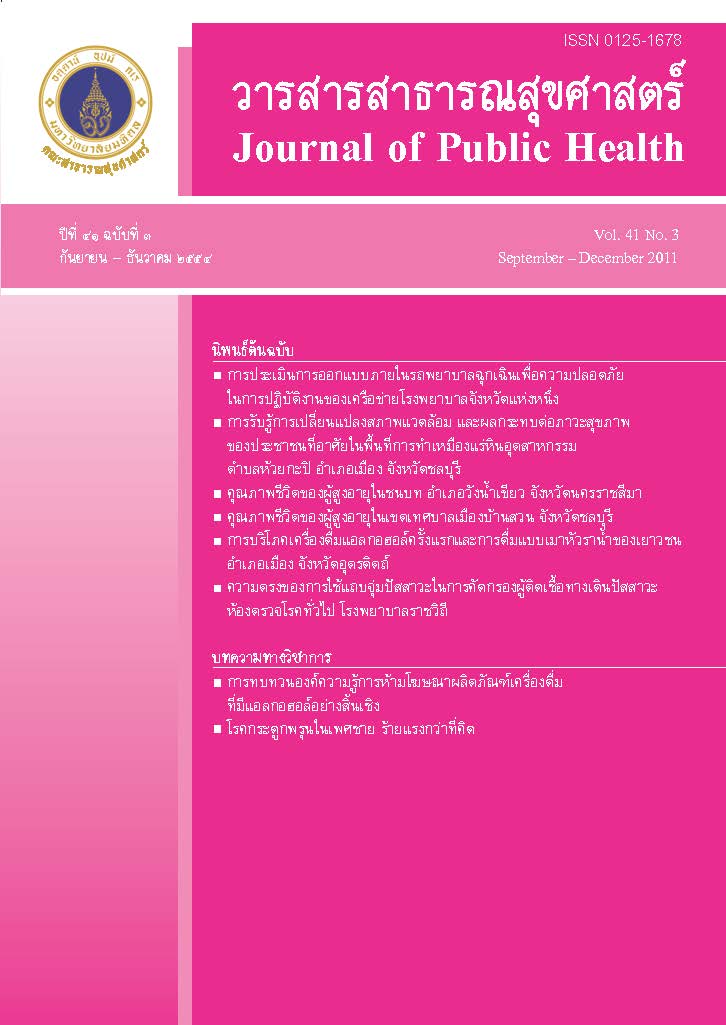ปัจจัยที่มีความสัมพันธ์กับความพึงพอใจในการใช้นํ้าประปาหมู่บ้านแห่งหนึ่ง จังหวัดพัทลุง
Keywords:
water quality supply, satisfaction, tap water supply, คุณภาพการบริการ, ความพึงพอใจ, น้ำประปาหมู่บ้านAbstract
ABSTRACT
This cross-sectional study was to investigate factors associated with satisfaction towards tap water supply uses among people residing in Lankoi Sub-district, Papayom District, Pattalung Province. Of 115 samples was systematically randomized sampling in five purposive villages of Lankoi Sub-district between January and February, 2009. The descriptive statistics were used to describe the characteristics of the sample and simple linear regression analysis was used to analyze the factors associated with satisfaction towards tab water supply uses. The findings showed that most of the samples were female (75.7%), married (92.2%), had agriculture (93.0%) and yielded primary education (66.1%). About 72.6% of satisfaction was moderate. In addition, simple linear regression was performed to investigate the factors associated with satisfaction towards tap water supply uses. It was found that the staffs’ credibility of tap water supply was negative significantly associated with clients’ satisfaction of tap water supply system (p-value < 0.001), as well as, the staffs’ service quality (p-value < 0.001). The staff’s behavioral service (p-value = 0.003) were also negative significantly associated with satisfaction towards tap water supply uses respectively.
This study suggested that the tap water supply should be systematically and efficiently managed, in particular, quality, quantity and service in order to maintain of quality and quantity of tap water supply and reduce morbidity resulting waterborne diseases.
Key words: water quality supply, satisfaction, tap water supply
Downloads
Issue
Section
License
Creative Commons License CC-BY-ND


